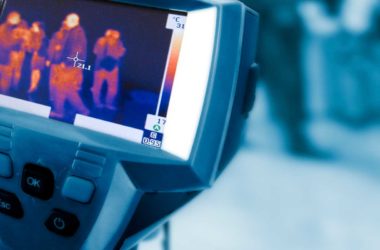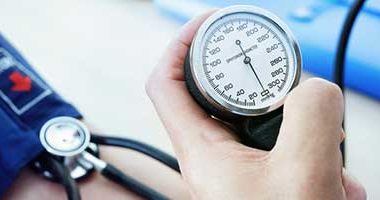In the fight against Covid-19, scientists have been researching UV lighting to see how this technology can be used to reduce transmission of the coronavirus. To understand whether this technology has the potential to fight the virus effectively, we must first understand how UV lighting works and the germicidal properties it can offer.
What is UV lighting?
Ultraviolet (UV) light is a type of electromagnetic radiation that is present in sunlight. UV wavelengths are shorter than visible light but longer than x-rays. They range from 10nm to 400nm and fall into one of three categories; either UV-A (near), UV-B (middle), or UV-C (far).
When UV lights have wavelengths that are shorter than 254nm they are considered to have “germicidal” properties which are ideal for killing viruses, mould and bacteria. UV light can achieve this by mutating the genetic material inside viruses and making it impossible for them to reproduce. This may not be the optimal wavelength for killing all viruses though. Some experts believe that different wavelengths can disable viruses in different ways.
For instance, whilst 254nm UV light damages the DNA of a virus so that it cannot reproduce, shorter wavelengths (207-222nm) are thought to be more destructive and effective as they damage the proteins on the surface of the virus so that it cannot attach itself to human cells.
How germicidal UV lighting has been used to provide increased sanitisation
UV disinfection systems have been around for a while and are available in many different designs from UV robots that can reach awkward and difficult-to-reach places to simple systems consisting of a bare lightbulb and timer. By embedding UV lighting in various gadgets and devices, innovative companies have been able to leverage these germicidal properties to provide effective sanitisation. Such gadgets include smart toilet brushes, water bottles and technology for cleaning smartphones to name a few.

There is already an established market for UV disinfection devices with applications of this technology being used in a number of industries and environments including:
Medical: Hospitals use UV robots to disinfect communal areas where bacteria may spread including waiting rooms, examination rooms and operating theatres. It is also used to disinfect medical instruments placed within special UV exposure boxes.
Transportation: UV robots are also being used for disinfecting public transport such as on buses, trains and plane. These robots move through the transport, disinfecting surfaces that the light can reach.
Education and retail: UV lighting can also be used to disinfect the air, a method which is considered a far safer alternative as the risk of UV lighting causing damage to the human eye is eliminated. This use of UV technology is particularly common in indoor spaces such as schools, restaurants and shops where air flow is already present and where UV lamps can be installed to disinfect the air as it circulates.
As such devices provide effective sanitisation, it raises the question as to whether this technology has the potential to be applied more broadly. Using the same principle, UV lighting has been tested on viruses in the past but in the wake of Covid-19 it’s use and research in this area has accelerated hugely in the hope that it could kill the coronavirus, limit transmission and provide greater sanitisation. Can UV lighting be used in the fight against Covid-19?
Can UV lighting be used in the fight against Covid-19?
We have seen the sanitising effects of UV lights with other coronaviruses in the past including Severe Acute Respiratory Syndrome (SARS). It was found that UV exposure for a period of at least 15 minutes could inactivate SARS, posing the question as to whether this technology could be applied to the Coronavirus.
The results of our study demonstrate that a one-unit increase in UVI is associated with a 1.2 percentage points decline in daily growth rates of cumulative COVID-19 deaths. The robustness checks confirm the stability of our results because they show a similar effect of UVI (ultraviolet index) on case fatality rate and comparable results across a variety of different model specifications.
Evidence of protective role of Ultraviolet-B (UVB) radiation in reducing COVID-19 deaths” Rahul Kalippurayil Moozhipurath, Lennart Kraft and Bernd Skiera
UV lighting can be used to offer a real solution by providing increased sanitisation and reduced transmission of viruses within public places. Hugely influential in the fight against Coronavirus, the uptake of this technology has increased substantially in the wake of the pandemic as a means of keeping public spaces safer by reducing the likelihood of transmission.
The global UV LED market size is expected to reach $1.71 billion by 2027 from $0.35 billion in 2019.
V LED Market by Type (UV-A, UV-B, and UV-C), Material (Silicon Carbide, Gallium Nitride, Sapphire, and Other), and Application (Curing, Purification, Indoor Gardening, Counterfeit detection, and others), and Industry Vertical (Healthcare & Medical, Agriculture, Industrial, Residential, and Commercial): Global Opportunity Analysis and Industry Forecast, 2020–2027
UV lighting is not without its limitations as it can only work effectively if the virus is directly exposed to the radiation without the interference of dust and debris and if the dose and duration of UV lighting is sufficient. However, research suggests that it can be hugely beneficial thanks to its germicidal properties and ability to kill viruses including Covid-19. As the world prepares to return to normality, the use of this technology will continue to increase as a way of creating a safer environment for everyone in public and communal spaces.











